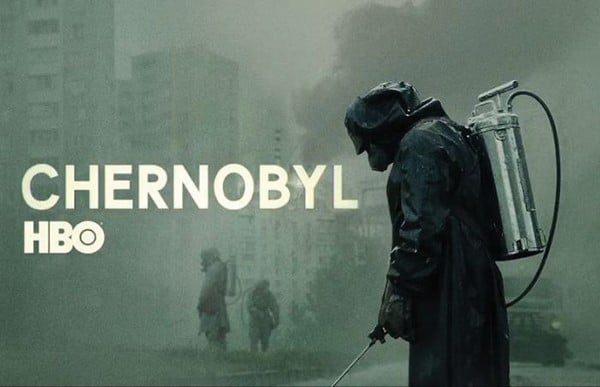Chernobyl – the dramatic, yet true to life, HBO series – has just topped IMDb’s top 250 TV shows. The attention to period detail is eye-popping: from the horn-rimmed glasses, pastel-toned clothes, authentic street signs and transportation, to the volunteers’ self-sacrifice and the total lack of local residents understanding about the magnitude of the events unfolding around them.
This was an event never before seen in the history of mankind, impeccably reproduced for television audiences. But for many of us, the Chornobyl catastrophe is not history. The disaster itself continues, and its effects can still be felt today.

Almost 350,000 locals were evacuated after the accident. Today, approximately 5 million people still live in areas which are officially designated ‘contaminated’. The lingering effects of Chornobyl are expected to cause 9,000 more deaths, according to conservative estimates by the World Health Organisation. Ten reactors of the same type used at Chornobyl are still currently in operation across Russia; from Leningrad to Smolensk to Kursk.
There are difficulties with accurately estimating the loss of life caused by Chornobyl, due to the limitations of the initial data, and inaccurately low estimates about both internal and external exposure. Internal exposure is what enters the body through eating or breathing, and is much harder to track and evaluate than external exposure. A single particle of radioactive material inside a lung can remain there indefinitely. This can cause serious risks to health.
According to Greenpeace research, the number of deaths from cancers caused by Chornobyl is closer to 100,000. While cancer has other causes than just radiation, these causes have, according to scientific estimates, been triggered, spread and exacerbated by the radiation from Chornobyl. With people today still living in contaminated areas, receiving further doses of radiation, this number will continue to rise.
So why are we still eating radioactive mushrooms and berries, and why are we still building new nuclear power stations?
In 2016 I was in Novozybkov, a town of Old Believers in the south of the Bryansk region. Shortly after the disaster, the town’s residents were going to be relocated, but at the beginning of the 90s – with the economic crisis affecting decisions – plans for the town were limited to decontamination. Greenpeace took samples from Novozybkov, and other villages of the Bryansk region.
Despite the warnings, people quickly began to pick mushrooms and berries in the forest again, to keep cattle, to collect game – all of which were radioactive. Most alarmingly, these products – Chornobyl berries and mushrooms – are sold to other regions; no-one is immune from radioactive products getting into their homes.
It is hard to imagine any other area of human activity where one mistake can have such large-scale, long-lasting consequences. The high price for atomic power is paid not by governments, nor by companies, but by ordinary people, who pay the cost, generation after generation.
